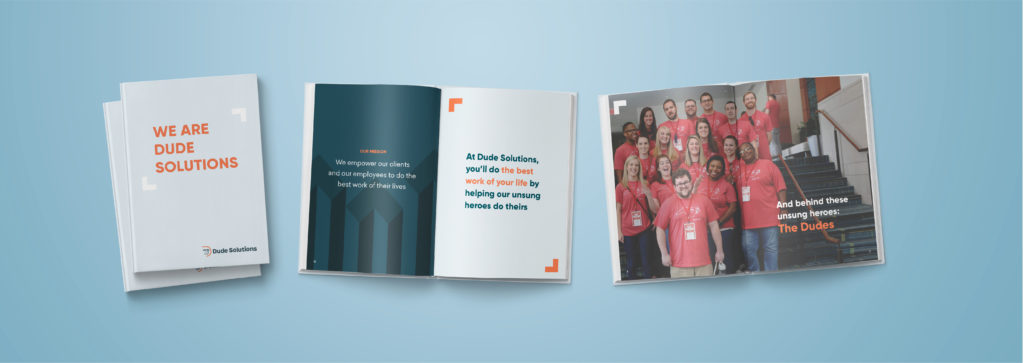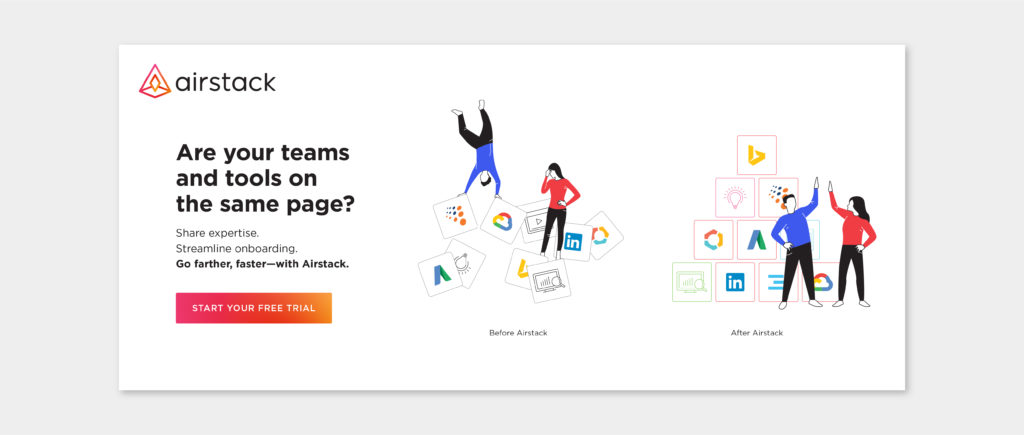Five of our favorite ways to roll out your new brand
Picture this.
You’ve just gone through a multi-week or multi-month branding process. You’ve pored over countless pages of research, interview, and survey results. Explored every possible synonym for that one-word-that-seems-to-be-the-only-word-but-still-isn’t-quite-the-right-word. Looked at every Pantone swatch under the sun. Tested the usability, contrast, and readability of your new identity across myriad mediums. Built consensus with your core working group. Secured approval from your leadership team.
Phew.
You’ve signed off on the final product—a spiffy, strategic new brand you’re proud of. You’re eager to share it with the world.
But how?
In rolling out new brands, so much of the initial impact or “wow factor” comes down to execution. When you’ve only got one shot at showing the world your new brand for the first time, it’s important to get it right. And to give that beautiful new brand the royal treatment it deserves.
No pressure.
In my last post, I talked about five simple ways to help build buy-in at every step of your branding project. From having the right people in the room, to sharing the process openly and transparently—the journey is made easier when you get it right from the start. Now, with your rebrand complete, let’s talk about how to put that brand to work.
In this post, I’ll share five of our favorite rollout recommendations to activate your brand across your organization.
1. A book, a wall, a shirt
A final output of most of our brand projects is a brand guidelines document—packaged in whatever form makes the most sense for any particular client. From positioning strategy to logo spacing rules, product messaging to personas, this document is the whole kit and kaboodle.
Because it’s so detailed, the brand guidelines are primarily intended for your brand and marketing teams—not necessarily every person in every department across the organization. When rolling out the new brand to the whole company, it helps to have a simpler, more streamlined document that’s easy to digest and share.
Enter the brand book.
A well-designed, printed (yes, printed, even in this digital age) resource that’s given to every single employee in the organization. Unlike the comprehensive brand guidelines, the brand book should contain only the key elements of the new brand that are important for everyone to know and internalize—mission, vision, values, story, key messages—all brought to life through the visual system.
A brand book can help every person in your organization feel included and empowered to tell your company’s story. It’s a powerful tool for onboarding, too. Imagine if every new employee walked into their first day of work and had a brand book waiting for them on their desk. It’s a strong signal that you’re invested in your brand—and your employees’ role in shaping and living it.
If a printed book is too large of an investment, or you’re worried about needing to order reprints if any contents of the brand book are likely to change (i.e. statistics, staff members, etc.), you could consider a digital format instead. E-books, microsites, or pages within your intranet are all great options. There are even online tools like Frontify that were specifically designed for digital brand books.
Some companies take things a step further and make pieces of their brand book available to the general public—whether in print or online (like Uber, Red Hat, and SAS for example). Sharing this foundational document with external customers and partners can help further reinforce the brand. And ultimately, it also improves consistency in how your brand story and visual system are used by people outside of your team.
Another way to drum up excitement for your new brand—particularly a new big brand message, logo, or visual system—is to quite literally put it on your office walls. If you have the budget and wall space to spare, plastering key elements of your verbal and visual systems on the walls can be an incredibly powerful and impactful way to reinforce your brand. You can see a sampling of how we helped the team at Dude Solutions do it here.
Executed well, these physical touchpoints can serve as tasteful cues. Expressing why you’re in business—and inspiring your employees every day. Particularly when your newly launched brand is still in its infancy, creating an environment in which your employees (and any visiting customers or clients) are reminded of the brand is a great first step in overcoming the familiarity gap.
Finally, #swag! Shirts, reusable water bottles, and other promotional items are a fun and relatively low-cost way to celebrate and spread your new brand and messaging. Not only do your employees get something cool to keep, but it’s also essentially “free” marketing for you and your new brand. Give out your new branded gear at a company all-hands or retreat, and take advantage of the opportunity to snap a few pictures of your decked-out team for your website and social media.
2. Brand, meet culture. Culture, meet brand.
To give your brand the best chance of success, you need to make it part of your company’s culture. And hopefully, if you’ve built your brand from the foundation of your first principles, it should already feel very much like you.
Embedding your brand into your culture shows your employees that brand is much more than just a logo or the words your marketing team tells your salespeople to use. It establishes every component of your brand as core to your organization’s strategy. It proves to your team that in a world of rapid change, the principles at the heart of your brand will always remain constant—even as you grow and scale.
To kickstart this beautiful brand-and-culture kumbaya, consider creating a culture day (or culture week, if you have the time and resources). An annual celebration of your company filled with fun activities or workshops that reinforce your unique culture and the team that brings your brand to life each day. You could invite speakers to join specific sessions, or encourage your employees to participate as facilitators. Consider creating peer-to-peer or management-to-employee award programs—rewarding behaviors that align with the brand’s core values, differentiators, story, or big brand message.
And reinforce your brand through team-wide communications. Whether it’s an internal blog digest, employee feature columns shared internally, or industry insights and newsletters published externally, find opportunities to pull raw material and ideas from the same pool of themes your brand was built on.
3. Out with the old
Have a clear plan (and a realistic timeline) for sharing your new brand with the world. Don’t assume that just because you have your new brand story ready to go in a PDF or in Google Slides that it’ll be a simple copy-and-paste exercise to get your new messaging onto your website or sales sheets. Always give yourself more time than you think you need to do it right.
Before you begin the process of updating your existing collateral and brand touchpoints, be sure every person on your implementation team has been fully briefed on the rebrand. Assemble a passionate and excited team—people who want the new brand to succeed.
It can be overwhelming to think about updating all of your brand touchpoints at once. Particularly if your rebrand means building or changing new infrastructure and expensive physical assets, like signage or office decor. So we recommend creating a plan to roll out your new brand in stages.
Focus on updating the channels that are most important to your ability to sell your product or service, as well as any less “permanent” touchpoints, first. Here are a few examples to prioritize:
- Website and key landing pages
- Communications and sales materials
- Presentation templates
- Social media accounts
- Business cards and other physical assets
4. Make it fun and engaging
See beyond print and written media. Consider engaging a film or animation vendor to translate your story into video format—or leverage these resources internally if you’re lucky enough to have them in-house.
Videos are extremely adaptable across a number of applications—trade show booths, social media, office lobby reels, paid advertising. They can be easily spliced and edited depending on your channel’s specific needs. And they can bring new life to your message in ways words alone never could.
Also consider running a dedicated launch campaign to kick off your new brand. You could focus on creating audience-specific messaging to drive conversions. Or you could take a more general approach to increase awareness for your brand online and at trade shows or conferences. Or maybe you go big and buy ad space or plan a flash mob in Times Square (people still do flash mobs, right?!). Hone in on the specific priorities for your new brand and think about campaign formats or strategies that could help you reach those goals.
We recently worked with the team at Airstack to create their brand as well as their launch strategy. (Spoiler alert) flash mobs weren’t involved. But we did leverage the foundational Airstack story for inspiration as we built out campaign-specific messaging—speaking to the needs of the audiences we knew we needed to attract from the get-go.
5. Ongoing reinforcement is key
Reaching the finish line of the project itself is only just the beginning. From here, it’s going to require at least a little continual care and feeding. You’re the steward of your brand and the leader of the team responsible for upholding it. The work is never truly done.
But don’t worry. There are ways to make maintenance a little bit easier.
Update your brand guidelines and brand book regularly. If anything about your company’s verbal or visual identity shifts, it may be time for a reprint or revision. Keeping your guidelines clean and accurate creates a clear “gold standard” to which all other brand materials should aspire.
Make sure your brand book is easily accessible for all of your employees. If it’s hard for your employees to find which version of the logo or hex value or brand pillar message they should be using in the deck they’re working on, you can bet they’re going to fudge it. Link to them in your intranet, company-wide emails, or even print out a few reminder cards people can keep at their desks—putting the brand materials at their fingertips will set your brand up for success.
Conduct regular audits of brand materials across your organization. For enterprise-scale companies, you could even consider assembling a brand QA team to ensure each new piece of collateral produced meets your brand standards.
And finally, never underestimate the value of brand training. Ride the wave of enthusiasm immediately following your brand launch to get the whole organization trained up on your new story, big brand message, and visual identity. Then hold regular refresher training sessions throughout the year, particularly for the people and teams primarily responsible for creating content on behalf of the brand.
We love being part of our clients’ stories as they release their new brands into the world. From brand strategy to brand rollout, we’re here for it—and here to help.
Got a brand project in mind, or a product or company launch on the horizon? Let’s talk about it.

